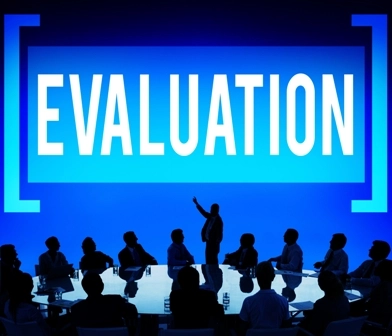Part B Insider (Multispecialty) Coding Alert
Feds Press on With Surprise Billing Regulatory Reform
Let CMS know how you feel about the changes by the Dec. 6 deadline.
If your head is spinning from the number of balance billing policy changes that have come down the pike over the last year, you are not alone. Read on for the latest update on the No Surprises Act.
First: In December 2020, Congress issued the No Surprises Act, which was part of the mammoth Consolidated Appropriations Act, 2021. The No Surprises Act, which was sandwiched in the 5,593 pages of legislation, aimed to tackle the longstanding problem of surprise billing in healthcare.
Next: The Departments of Health and Human Services (HHS), Labor, and Treasury, in tandem with the Office of Personnel Management (OPM) and the Centers for Medicare & Medicaid Services, built on that legislation with an interim final rule titled “Requirements Related to Surprise Billing: Part I,” which was published in the Federal Register on July 13. Under this rulemaking, the Departments set about redefining emergency services, cemented a balance billing ban, mandated cost-sharing methodologies, and advised on disclosures for patients about the new rule. Review the July rule at www.govinfo.gov/content/pkg/FR-2021-07-13/pdf/2021-14379.pdf.

Now: The feds issued another interim final rule with comment period (IFC), implementing more balance billing reforms and expanding the No Surprises Act even further. The latest release — and third actual rule — “Requirements Related to Surprise Billing; Part II,” was published in the Federal Register on Oct. 7, and covers a broad range of topics, “including provisions related to the independent dispute resolution process, good faith estimates for uninsured (or self-pay) individuals, the patient-provider dispute resolution process, and expanded rights to external review,” a CMS release indicates.
Healthcare disparities remain a hot topic, and a plethora of equity issues related to both the availability and cost of care have been exacerbated during the pandemic. The rulemaking aims to eradicate longstanding issues and offer consumers information upfront to aid in their care decision-making, CMS suggests.
“Price transparency is a reality in almost every aspect of our lives except health care,” said CMS Administrator Chiquita Brooks-LaSure in a release. “The Biden-Harris Administration is committed to changing this. With today’s final rule, we are requiring health care providers and health care facilities to provide uninsured patients with clear, understandable estimates of the charges they can expect for their scheduled health care services.”
Understand What Surprise or Balance Billing Entails
“Surprise billing happens in emergency and non-emergency care,” CMS says. Surprise billing, which is also referred to as balance billing, generally occurs when a patient receives care expecting an in-network rate or by in-network clinicians, but instead the physician or facility is actually out of network. The provider then bills the patient directly, leading to a bill higher than the patient anticipated due to the misunderstanding about in-network status.
Though this most frequently happens in emergencies, receiving care from a physician who’s out of the patient’s health plan’s network can also lead to balance bills. In fact, the problem has become so prevalent that the national media sometimes picks up stories about patients who receive astronomical, unanticipated bills for care they believed that their health insurance would cover. And that’s where the No Surprises Act and subsequent provisions come into play.
Consider These Provider-Specific Takeaways
The latest surprise-billing opus focuses on the federal independent dispute resolution (IDR) process between out-of-network (OOS) providers, facilities, and payers. The rule offers a more in-depth definition of the IDR process while setting a timeline, rate structures, and procedures for how it will work.
“Part 2 also addresses requirements for providers to offer a good faith estimate of expected charges for uninsured and self-pay patients and creates a patient-provider dispute resolution process to determine a payment amount when an uninsured or self-pay patient is billed in an amount higher than the good faith estimate,” explains attorney Jeffrey I. Davis with law firm Baker Donelson in online legal analysis.
Here’s a quick overview of four key points you should know:
1. Know the new IDR timeline. The rule outlines a specific time frame based on each particular IDR action. For starters, “the regulations provide that, after 30 days of negotiation, either party may initiate the federal IDR process,” says attorney Lauren M. Moldawer with law firm Mintz, Levin, Cohn, Ferris, Glovsky and Popeo, P.C., in online analysis.
Other timelines focus on when to initiate the IDR after failed negotiations; how long the agreement on the IDR entity should take; the department selection of an IDR entity if the parties cannot agree; payment submissions and additional documentation to the IDR entity; payment determinations; and final payment submissions to the applicable party, according to the CMS fact sheet on the rule.
2. Bank on the QPA. The qualifying payment amount (QPA) is central to understanding the new rule and factors into many of the new policies. “The QPA is generally the plan or issuer’s median contracted rate for the same or similar service in the specific geographic area,” CMS says.
In a nutshell, payment determinations by the IDR entity must rely on the QPA and assume it’s the correct OON amount. “Therefore, it [IDR entity] must select the offer closest to the QPA, unless credible information presented by a party rebuts that presumption and clearly demonstrates the QPA is materially different from the appropriate out-of-network rate,” Moldawer expounds.
3. Understand the IDR entity certification process. The rule lays out how an IDR entity becomes federally certified and what documentation must be submitted during the process. Additionally, “the rule provides a process by which members of the public, including providers, facilities, providers of air ambulance services, and plans or issuers, can petition for the denial or revocation of certification of an independent dispute resolution entity,” the fact sheet says.
4. Get on board with the reporting requirements. CMS sets up a monthly reporting mandate for certified IDR entities in the rule,specifically to “inform quarterly public reports on payment determinations” and promote transparency in the process, the agency insists.

Industry Organizations Weigh In on the Rule
Provider groups like the American Hospital Association (AHA) back a “balanced billing approach,” but they aren’t too happy with the new rule, citing its pro-payer policies.
“Today’s rule is a windfall for insurers,” laments Stacey Hughes, AHA executive vice president in a release. “The rule unfairly favors insurers to the detriment of hospitals and physicians who actually care for patients. These consumer protections need to be implemented in the right way, and this misses the mark.”
The AMA also questions why the latest rule ignores the original congressional work on the No Surprises Act and its outline to improve the IDR process. “It [the rule] disregards the insurance industry’s role in creating the problem of surprise billing at the expense of independent physician practices whose ability to negotiate provider network contracts continues to erode,” warns AMA President Gerald A. Harmon, MD, in a release.
“Congress appreciated the negative consequences of national price setting for health care services and spent considerable time and effort developing a robust independent dispute resolution process to maintain market balance and preserve access to care …,” Harmon adds. “It also is apparent that the Administration failed to appreciate the importance of creating an accessible and impartial dispute resolution processes as a backstop against even greater insurer abuses.”
The public can comment on the rule through Dec. 6. Consumer protections defined in the rule, however, are slated to begin Jan. 1, 2022.
Resource: Find the Oct. 7 IFC at www.federalregister.gov/documents/2021/10/07/2021-21441/requirements-related-to-surprise-billing-part-ii.
Related Articles
Part B Insider (Multispecialty) Coding Alert
- Part B Errors:
Prevent MAC Ire With Complete Lab Requests
Plus: Don’t skimp on E/M coding documentation. At your Part B practice, you likely submit [...] - Balance Billing:
Feds Press on With Surprise Billing Regulatory Reform
Let CMS know how you feel about the changes by the Dec. 6 deadline. If [...] - Part B Coding Coach:
Mythbuster: Shatter These 4 Myths on Common Winter Illness Dx Coding
Boost your coding skills with ICD-10 guidelines and instructions. With winter around the bend, chilly [...] - Reader Question:
Here’s the Scoop on Timely Filing Extensions
Question: At our practice, we are very careful to submit our Medicare fee-for-service (FFS) claims within [...] - Physician Notes:
Avoid Medicare Appeals Mix-Ups With MAC Advice
Tip: Ensure you’re sending appeals to the right place. If your appeals seem to be [...]




